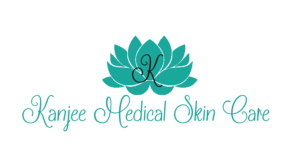Dysport/Botox-frequently asked questions
Kanjee Medical Skin Care
For a Confidential Consultation call (905)-9181358
Dysport /Botox Cosmetic®
Frequently Asked Questions from Our Patients
What is Dysport/Botox Cosmetic®
BOTOX Cosmetic® is a treatment for wrinkles such as frown lines, forehead wrinkles & crows feet.
Is it Safe?
Yes! BOTOX Cosmetic® has been available for 20 years and has been used to treat many neuromuscular diseases.
In fact it is used in children as young as 2 yrs. old to treat Cerebral Palsy and has been proven to be very safe through many years of extensive testing and research.
BOTOX Cosmetic® is an approved prescription drug used to treat patients for cosmetic wrinkles.
It is also approved for use for excessive sweating.
Isn’t it poison? Isn’t it botulism?
No, BOTOX Cosmetic® is NOT botulism and it will not cause food poisoning. Botulism is the name of an illness not the name of the product.
BOTOX Cosmetic® is a natural, purified protein. It is an approved prescription drug that is used in very tiny doses.
How does it work?
BOTOX Cosmetic® works by relaxing the muscles underneath the skin to create a smooth and refreshed appearance.
What can I expect during the treatment?
Generally, after the consultation, the procedure only takes up to 15 minutes.
It is injected with a very tiny needle. It is so quick and safe that you can immediately return to your daily activities (and no one will know you have had it done!)
How quickly does it work? Is it Permanent?
It can take up to 2 weeks for it to take full effect. No – BOTOX Cosmetic® is not permanent.
It lasts between 3-4 months on average but everyone is different.
Does it hurt?
Most patients say it feels just like quick little pinches although everyone is different. Our patients usually say, “Is that all?”
I don’t want to look like a mask without expression – will that happen?
We ensure you get the look you want – as natural as you want.
Your needs & interests are discussed during your consultation to ensure you are happy with the results.
What are the side effects?
Side effects are very rare and are not permanent. Rarely, there can be a slight headache or some minor bruising which is easily covered up with makeup.
How much does it cost?
The cost depends on the amount of BOTOX Cosmetic® that you require. A proper consultation with our clinic is required in order to determine what is right for you.
Why should I get Dysport/Botox Cosmetic® with Dr. Kanjee instead of another clinic?
Dr. Kanjee has a focused practise in Dermatology and has over 15 years of experience. Because she is a physician she has an exceptional understanding of the facial muscles. We have many satisfied BOTOX Cosmetic® patients returning to our office because of our ability to customize the treatments to achieve the individual look each person wants. Our goal is to give you the best in customer service and excellent treatment results.
